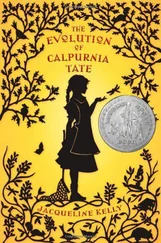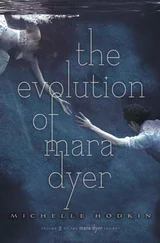The woman from upstairs came back into our apartment, leaving our front door open to the public hallway, with a set of keys tinkling from her finger. She found Lydia and me haphazardly dressed and ready as ever to go. She led us outside to her car, which was parked on the side of the street near Lydia’s. Lydia’s eyes met the violent sunlight in a daze of molish blinks, as if she was emerging to the surface from a year of living underground. The woman helped Lydia into the passenger seat, and I climbed into the back of the chipped old red four-door sedan, and the woman drove us in this wheezy-engined vehicle to the University of Chicago Medical Center, just four blocks away from the Erman Biology Center, which is where they had taken me, languageless, naked and fresh from the zoo, to begin my induction into human civilization. The upstairs woman knew the way. She may have said something about how she worked here as a nurse on the night shift and slept in the daytime, which was why she knew what to do and where to go. But maybe not. My mind was already in a nauseous dream-state of panic, a panic that poured oil all over my brain for the whole day and made it difficult for things to stick in it properly, and so my memories are jumbled and unclear of going to the hospital — of our shoes clopping across the parking lot — of somebody speaking with somebody else at a desk — yes, definitely a big pink desk — of a clipboard of complicated paperwork that had to be filled out — were there forms to be filled in, Lydia? — how did you fill them in? — what could you have possibly written down to satisfy them? There was paperwork, there was a vast waiting room, there was a big pink desk. There were antiseptic and sharply ammoniac odors, there were shiny sleek-waxed floors that caused our shoes to crunch and squawk, there was a fish tank full of tropical fish, on the floor of which a ceramic man in a diving suit seemed to have just discovered a tiny chest of ceramic treasure half-buried in a bed of gravel made pink by a colored fluorescent tube overhead. Wait a moment — where did the woman who lived upstairs go, the woman who had driven us to the hospital? Did she vanish from our company at some point in that long, hellish day of fear and sorrow? She must have, because I remember we took a cab home after everything at the hospital. Did we ever thank her properly? Did we ever see her again?
Here is what I remember from that day. I remember a room with some sort of giant machine in it. The machine was straight out of a science fiction movie set aboard a spaceship a thousand years in the future. It was a huge shiny white metal donut, standing up on its side, with a bed in it. Lydia was made to lie down with towels bunched around her body and a pillow beneath her knees, and she was told to put her head inside this cylinder of white metal. Then the bed was raised up by a robot and slid with buzzing motor into the yawning hole in the middle of the machine. For some reason there was music, melancholy opera music, playing from a stereo in the room. Why? I was not allowed to go into the room with her. I had to sit and watch it through a window in the wall of an adjoining room. Whatever this machine was doing to her, it took a really long time doing it, and as it did what it was doing the machine made chattering, bleeping, warbling, and gnashing noises that sounded exactly like noises a flying saucer would make as it hovers slowly to earth before a wonderstruck and fearful crowd, all points and murmurs and ooh s and aah s, and do they come in peace? Why was there opera music blaring in that room? After they took Lydia out of this machine, we were made to wait again. Long bouts of waiting and uncertainty — that’s what I remember most about that day. Waiting. Back in the waiting room. Was it the same waiting room, or another one? I remember a room filled with uncomfortable chairs upholstered in an ugly tongue-colored cloth, I remember coffee tables littered with bright shiny magazines, pages that crinkled between the fingers, I remember a TV with the news on and the sound off. I remember that Lydia had to lie down across several of the pushed-together seats in the waiting room and take a nap, a long nap. I remember small Styrofoam cups of coffee and thin red plastic wands for stirring in the sugar and milk. I remember a water cooler whose blue plastic tank was flanked by a tall cylinder, from the bottom of which one could pull a conical paper cup to fill with the tepid water that trickled from a spigot; when one depressed the spigot’s lever the water tank would belch up a cluster of bubbles, and the conical paper cup in your hand would quickly become floppy with dampness. And then there was the aquarium with the ceramic treasure-hunting diver in it: I whiled away some of those sluggish, agonizing hours watching the angelfish dumbly swishing their flat, triangular, translucent bodies from one end of their ten-gallon universe to the other and back again. I remember that day as a Morse code of waiting and testing, a dash-dot-dash-dot-dash of long periods of waiting punctuated by brief periods of frenzy and terror, time spent with the doctors, with their scientific languages and ear-needling machinery. I remember holding and squeezing Lydia’s hand — more for my own comfort than for hers, I’m afraid — as the doctors turned off the lights, and in the darkness proceeded to clip black sheets of glossy film to a white glowing plate on the wall. I remember the doctors pointing to certain areas of the images. I remember the wobbling sound of the film sheets in the doctors’ hands before they clipped them to the plate of light. These floppy sheets of shiny black film, when pressed flat against the glow of the plate on the wall, contained pictures that were thus: a bright white outline of a person’s head, emerging sharp against the darkness around it, and inside of the outline, an intricately branching lump of gray cauliflower. Inside the lump of cauliflower, in one cluster of its fat lumpy branches, was a dark blot. The doctors pointed to this blot as they spoke. I remember these doctors bandying about a certain very beautiful and musical polysyllabic word that nevertheless was a word to be said in a low voice and with a grave face on, which was “oligodendroglioma”—this complicated eight-syllable song of Greek roots lilting many times from the doctors’ lips.
A brain tumor had been found in the left frontal lobe of Lydia’s brain. This tumor may well have been there for years, said the doctors. Years! They guessed this is probably what happened: a “benign” tumor, which had caused no “noticeably debilitating symptoms” (those words I remember clearly, as that is an exact quote from the mouth of one of these doctors: “noticeably debilitating”), had, for reasons unknown, recently begun to blossom into a “malignant” one. It had decided it was time to grow, and was currently in the process of chewing up part of Lydia’s brain, and was getting fatter and fatter, crowding out and pushing around all the good and needed matter of her front-left cerebrum. The way the doctors described it to us, I imagined Lydia’s tumor as a grotesquely fat man rudely shoving his way into a crowded elevator, squishing everyone else against the walls until they cannot breathe. There were several options, said the doctors, none good. They were united in the opinion that surgery— fucking brain surgery —was the best way to go, although they acknowledged that it could prove to be difficult, as apparently the tumor was located in a particularly inconvenient spot in her brain that would make it tricky to scrape out. So they advised first surgery — that definitely — and then a period of chemotherapy to follow it up. The chemotherapy was optional but strongly recommended. Lydia was told to think it over carefully, but that the brain surgery was a must if she hoped to live.
Читать дальше












